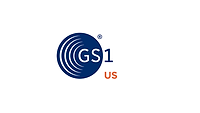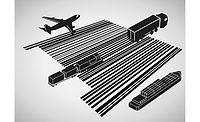Manufacturing News
FDA guidance documents help processors meet PCAF, PCHF requirements
Guidance helps explain how processors can meet preventive control regulations

FDA’s Food Safety Plan Builder may help in designing and building a food safety plan, but it can only be as useful as the information put into it. Source: FDA.
As 2017 wraps up, FSMA continues to put a wrap on pieces of the food safety legislation as it incrementally enforces the regulations. As of Sept. 2017, small businesses that handle animal foods must comply with the Preventive Controls for Animal Foods (PCAF) regulation, and qualified facilities of all sizes that fall under PCAF also face cGMP compliance.
Fortunately, FDA recently released two guidance documents intended for processors that may be subject to the PCAF or the Preventive Controls for Human Food (PCHF) rule.
The first guidance document will help animal food processors determine if they are subject to the cGMP requirements in the PCAF regulation. Entitled “Guidance for Industry #235: Current Good Manufacturing Practice Requirements for Food for Animals,” it provides recommendations for meeting cGMP requirements. In the appendix, this document also includes a self-assessment tool that processors may use to evaluate their compliance with the cGMP requirements.
The second guidance document, “Application of the ‘Solely Engaged’ Exemptions in Parts 117 and 507,” is a draft guidance (open for comments) that explains when facilities are exempt from cGMP or preventive controls (PC) requirements, because they are “solely engaged” in certain activities. According to FDA, the “solely engaged” exemptions are related to:
- The holding or transportation of raw agricultural commodities (RAC)—other than fruits or vegetables
- The storage of unexposed packaged food
- Other activities tied to the preparation of nuts and other commodities.
One example of an exemption from both cGMP and PC requirements is a facility consisting of a grain elevator that holds grain RAC for human and animal food use and does not engage in any other activities covered by the cGMP or PC requirements.
Additional help
FDA’s recently released software tool, called the Food Safety Plan Builder, helps processors develop food safety plans that meet the requirements of cGMP, hazard analysis and HARPC for human food (21 CFR 117). The use of this tool is optional. But is it the panacea needed to create a food safety plan?
“Feedback from some our clients is that it can be laborious, given the amount of details you have to enter,” says Eric Edmunds, food safety director with The Acheson Group, in a recent FSMA Friday event sponsored by SafetyChain Software. “As with any other electronic tool, the product that you get out of it is as good as the information you put into it!”
A good food safety plan starts with a good hazard analysis, and the Food Safety Plan Builder tool is not a substitute for the expertise and judgment from your preventive controls qualified individual (PCQI), says Edmunds. Also, there is no guarantee that if a processor uses the FDA tool, the resulting food safety plan will be compliant with FDA regulations, so it is just an additional tool to complement all other available resources.
Coming next year — and beyond
One glance at FDA’s “FSMA Final Rules: Key Dates” shows that both 2018 and 2019 will be very busy, especially for small and very small companies involved with produce and foreign imports. January 28 marks the date for compliance with the Produce Safety rule for very small farms growing and marketing sprouts and other produce. Some farms may qualify for certain exemptions based on the requirements in sections 112.6 and 112.7. For details, see the compliance guide for small businesses under the FSMA Produce Safety rule.
Under the Foreign Supplier Verification Program (FSVP) rule, many US importers with foreign suppliers which qualify as small businesses businesses (defined as having fewer than 500 full-time employees), have until March 19, 2018 to implement FSVPs for foreign suppliers of human food, says David Lennarz, vice president, Registrar Corp.
FSVPs consist of documenting several detailed components for each foreign supplier and each category of its imported food products (e.g., chocolate confectionery, bottled oils, etc.). To insure compliance before the deadline, importers should have started the documentation process several months ago.
Under the FSVP, FDA requires two major things, among others:
- First, a document of supplier compliance, which proves that each supplier has been evaluated and approved, showing it is compliant with preventive controls.
- Second, a hazard analysis of food products. A detailed hazard analysis should cover each category of products imported from a given supplier.
Lennarz points out that a single supplier may need multiple FSVPs, and if they haven’t already, importers need to get started, because Registrar Corp. has seen FDA FSVP inspections occurring in as little as three months after the deadline (as was case of larger importers, whose deadline was May 30, 2017).
Looking for a reprint of this article?
From high-res PDFs to custom plaques, order your copy today!






